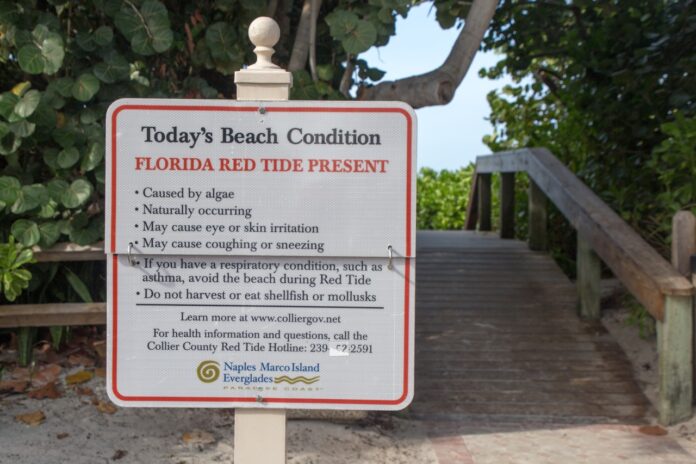Issues of red tide are popping up throughout southwest Florida, from Pinellas County to Monroe County’s offshore.
According to a March 8 report by the Florida Fish & Wildlife Conservation Commission, red tide, or harmful algal bloom, was detected in 123 samples, of which 79 possessed medium concentrations throughout the state’s southwest coast. Eight of those samples were found offshore of Collier County and one offshore of Monroe County. The rest were found in Pinellas, Hillsborough, Manatee and Sarasota counties.
“We continue to use satellite imagery to help track this patchy event,” FWC states.
Per Mote Marine Laboratory, Florida red tide is a higher-than-normal concentration of a naturally occurring, microscopic algae called Karenia brevis, often abbreviated as K. brevis. It produces brevetoxins — powerful and potent neurotoxins — that can kill marine animals and be harmful to humans.
Possible effects from medium concentrations of red tide include respiratory irritation, shellfish harvest closures and probably fish kills. According to FWC, reports of fish kills in those counties are suspected to be related to the recent red tide event.
Per the University of South Florida and FWC, forecasts for Pinellas County to northern Monroe County predicted western movement of surface waters and southeastern transport of subsurface waters in most areas over the next 3 or so days.
At high concentrations, red tide can discolor water a red or brown hue. Blooms caused by other algal species can appear red, brown, green or purple. Red tides can last as little as a few weeks or longer than a year depending on the conditions that influence its growth, according to FWC. They could even subside and reoccur.
Red tide was observed at very low to high concentrations in and offshore of Pinellas County; low to high concentrations in Manatee County; very low to high concentrations in Sarasota County; background to high concentrations in Charlotte County; background to high concentrations in Lee County; low to high concentrations in Collier County; and very low to medium concentrations offshore of Monroe County.























